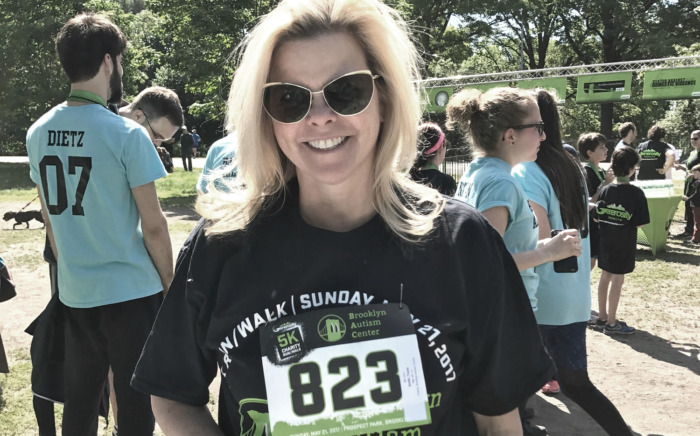The Spencer Walsh Law team is devoting more time than ever before to ensure that each client receives the anticipated funding from NYC which helps to relieve some of a family’s financial burden.
By Tracey Spencer Walsh, Founder and Chief Legal Strategist
(tracey@spencerwalshlaw.com)
Why is the Settlement Process Slower this year than in prior years?
- Volume. There is an increased volume of cases against the city, and not enough staff to handle the great number of matters referred for settlement. It has been reported to us that each OLS attorney is managing 200+ matters. Also, there is an increased level of turnover among NYC DOE staff in the settlement office necessitating a transfer of the file to a new Office of Legal Services (OLS) attorney and it takes them time to “catch up” on the files. The OLS supervisors report that they do not have enough staff to quickly move through their caseload.
- Pushback. This year we are seeing greater pushback from the Comptroller who is scrutinizing settlements more closely. This Comptroller review process is now taking much longer than in the past. The Comptroller’s office is also affected by the high volume of settlements it has to review and also claims to be understaffed.
How does the Settlement Process work in NYC?
In NYC, when a statutorily required “10 Day Notice,” is filed with the CSE, it is then sent to OLS for “investigation for settlement.” The stated “policy” requires that OLS respond to the 10 Day Notice within 15 days with its “Determination” as to whether or not OLS will refer the matter for settlement. Again, because of the high volume of cases, OLS has not been responding to the 10 Day Notices within 15 days, and sometimes, not at all. In many cases, we must also file a Due Process Complaint in order to get a case “noticed” by the DOE. We then assign members of our Litigation team along with the Settlement team to handle your matter.
My Case was Referred for Settlement – Now What?
By: Orla Mannion, Settlement Specialist
(orla@spencerwalshlaw.com)
If a case is referred for settlement:
- The DOE will send a letter requesting certain documents;
- Parents must provide us with the required documentation;
- We must have all the documents before we can make a submission to OLS- OLS will not make an offer on a “partial” submission;
- When we have all the required documents, we submit it as a “package” with a cover letter to OLS;
- The OLS staff attorney assigned to the matter reviews it, discusses it with a supervisor and then determines whether any additional documentation is required in order to satisfy the Comptroller’s scrutiny;
- If more documentation is needed, then parents must provide the additional required documentation, and OLS will again review the documents;
- If OLS believes it has enough information, the assigned OLS attorney will make an initial offer of settlement;
- The client decides whether to accept the offer or make a counter-offer;
- The negotiation process is repeated and the OLS response time is usually very slow;
- When there is an accepted offer, we help expedite the matter by preparing the stipulation of settlement. These stipulations are DOE template stipulations (“Stips”) and the terms are mostly “non-negotiable.” In past years, the DOE would draft their own Stips, but now rely on us to prepare the Stips.
- We send the draft Stip to OLS, OLS reviews it and it goes to an OLS supervisor;
- The Stip is either accepted, or more likely, OLS makes edits to the Stip to which we will agree to or not. If not, the Stip process begins again.
- Once we have an agreed upon Stip, we send it to you;
- You have to sign 3 original copies and have each copy notarized;
- You return all 3 Stips to us and we then send them to the DOE using a courier service, such as FedEx (for tracking purposes);
- OLS then sends the Stip to the Comptroller’s Office for approval – this process can take a few months;
- The Comptroller either approves the Stip or rejects it:
- If the Comptroller rejects the settlement – the Stip gets kicked back to OLS with instructions on what changes are required for Comptroller approval;
- If the Comptroller approves the Stip, we await the DOE’s signature and when received, we return one original signed Stip to you and we maintain a copy.
- Now we can begin the reimbursement process.
We Have a Fully Executed Stip, How Does the
Reimbursement Process Work?
By Ashley Camarena, Reimbursement Specialist
(ashley@spencerwalshlaw.com)
- The DOE Bureau of Non-Public School Payables (“NPSP”) handles reimbursement and/or direct funding based on a settlement;
- An executed Stipulation does not automatically trigger payment – there are more submissions that need to be made to NPSP;
- We now will provide a copy of the fully executed stip to NPSP together with the documentation that is required for a particular client – the documentation that is necessary varies from client to client;
- For reimbursement, NPSP always requires:
- Executed Stipulation
- School Enrollment Contract
- School Tuition Affidavit
- Proof of Payments (proofs of payment must match the invoices and/or contract amounts. When it does not, there is a significant delay in receiving the funding)
- School Attendance Record
- If there are also private service providers in the program then Provider Affidavits are required
- Provider Invoices
- Proofs of Payments made to providers
- Funding “should” arrive approximately 30 days from the date of the submission, however, we are seeing a longer turn-around time due to the volume or reimbursements that NPSP is processing.
- If the school year is still in progress while the submission is made, some of these documents need to be updated and submitted on a monthly basis.
What is Spencer Walsh Law doing to move the process along?
- We look to mitigate any potential issues with the documentation that can delay the reimbursement
- Following up regularly with OLS and NPSP
- Quickly addressing any questions or need for additional documents
- Escalating the delay to OLS supervisors and DOE Deputies and dialoguing with them about the systematic delay and how that is affecting the families we represent
What can you do to help?
- Keep excellent and organized financial and school records
- Make sure that your proofs of payment and invoices and/or contract accurately correspond with each other
- Provide to us with the documents we request as quickly as possible
- Don’t pay cash for anything for which you are seeking reimbursement
- For Connors funding families, make sure you provide us with a copy of your federal tax filing (1040) and a copy of the E-File authorization
- Contact your local City Council representative and demand more staffing in OLS and NSPS
- Contact the Public Advocate, currently, Leticia James and let her know how the understaffing in these offices is affecting your family.
- Letitia James Telephone Hotline: (212) 669-7250
Email: GetHelp@pubadvocate.nyc.gov
Address: 1 Centre Street, 15 Floor North. New York, NY 10007
Walk-in Office Hours: Monday-Thursday from 10:00 a.m. to 4:00 p.m.
Fax: (212) 669-4701




